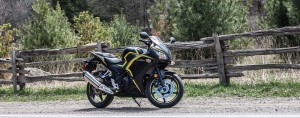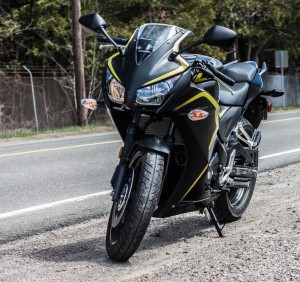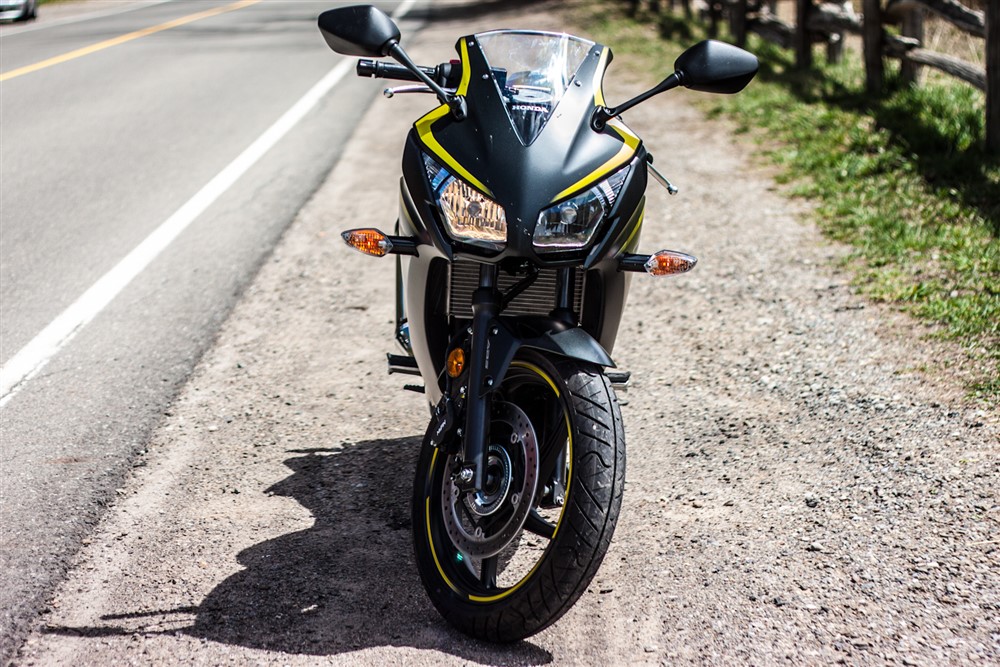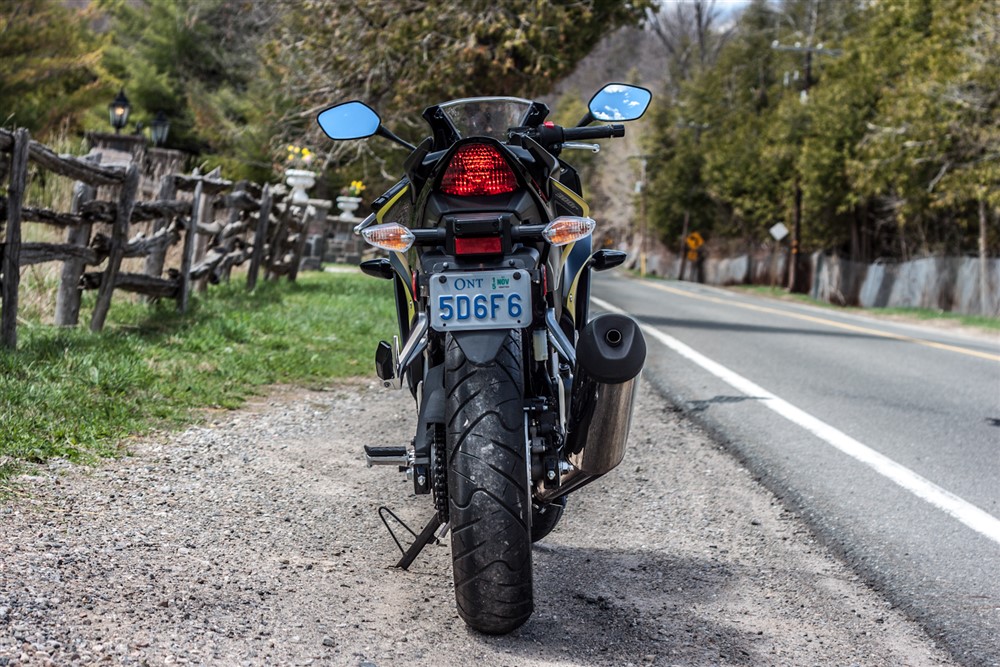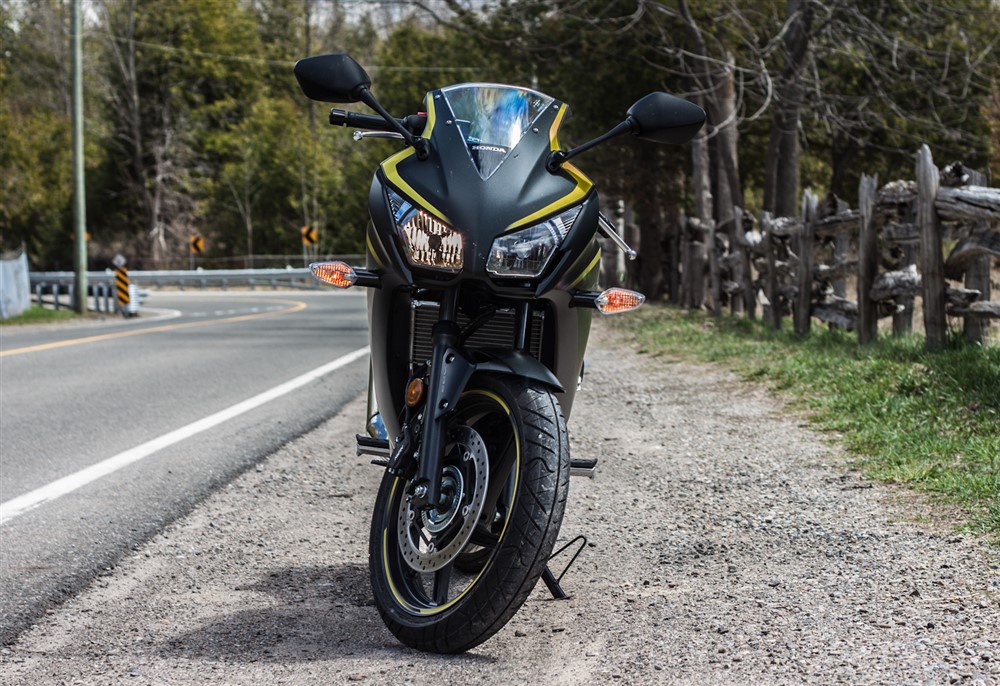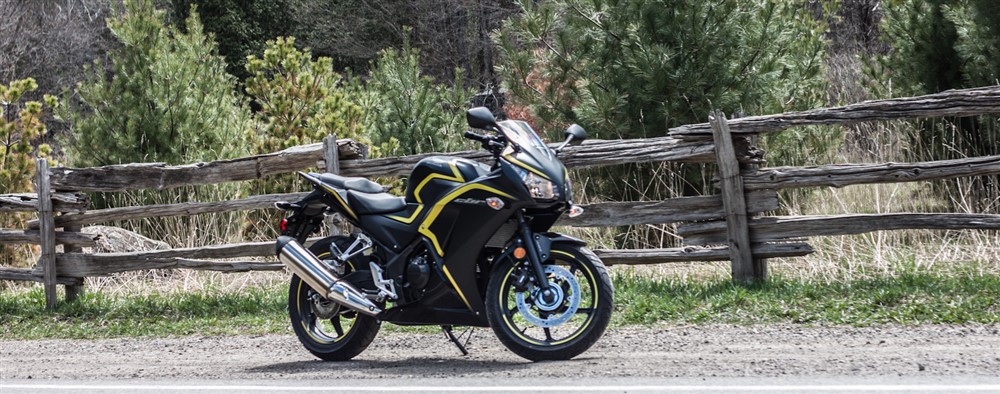The first motorcycle ride of the season is usually one of the best of the year. This year, I actually had the opportunity to ride this test bike around the same time I pulled my own Kawasaki Ninja 250 out of winter storage, so it gave me the chance to ride the two back to back and compare their positive and negative attributes. As such, my test ride of the 2015 Honda CBR300R started the season off with a modest yet confident bang. I just rode this bike in a track setting down in Georgia, but this was my first go at a day-to-day experience with it.
Since its debut in 2012, Honda’s CBR250R, the most affordable and smallest sport bike from the Japanese manufacturer, has been a huge hit in the North American market. Honda pulled the 2014 model in preparation for the slightly more powerful CBR300R, which has just arrived for model year 2015. Looks-wise, the 300R looks aggressive and sporty, not unlike its larger sibling, the CBR500R. In fact, considering this test bike was the first time I saw a CBR300R in person, I was a bit confused initially and thought I was looking at a 500R. My bike was painted in a gorgeous combination of matte black and gold. The gold striping throughout the fairings, body, and wheels stands out and turns heads everywhere.
In development of the CBR300R, Honda has used certain styling cues from the flagship 600RR and 1000RR models, and this is nothing short of a wonderful thing. Gone are the days where novice riders immediately stand out because of their choice of bike; the CBR300R doesn’t look anything like a starter bike, and its on-road behaviour is a bit more grown-up as well. Though the platform is essentially the same as the outgoing CBR250R, the crankshaft, piston, and connecting rod are all new. This increases the displacement by 37cc, to 286cc. The four-valve single cylinder engine is still liquid-cooled, but the fuel injection and exhaust have been heavily revised. Horsepower is increased (17%) and torque is increased right through the entire powerband. Peak horsepower is reached at 8,500rpm, so city riding is truly effortless.
Rather than five-speed units in 250cc models of the past, the Honda CBR300R makes do with a six-speed transmission, with light clutch uptake and forgiving shifts. We put just over 400km on this tester throughout our week-long test, and it involved a considerable bit of city riding. The 54.3” wheelbase makes it easy to toss about in the city, which remains the small CBR’s home element. The motor sounds peppy and the exhaust has a throaty growl to it, though an aftermarket pipe would help increase its bark to match its bite. When tossing it about in the city, the 300R is incredibly forgiving and bordering on nearly impossible to make erroneous maneuvers.
In typical Honda fashion, ride quality on the CBR300R is firm enough to be sporty without developing the jarring ride that supersport kings are known for. The front suspension is a 37mm fork with 4.65” of travel, and out back is a Pro-Link single shock with five-position spring-preload, and 4.1” of travel. The bike absorbs bumps and road imperfections nicely, and in no way will the rider feel isolated from the road.
With a seat height of 30.7 inches, the riding position is quite comfortable on the CBR. You’re not hunched over as much as you would be on other sport bikes, and the average rider will have a relaxed arm position as well. The seat and side panels have been decreased in width, which means shorter riders will be able to flat-foot with ease. However, I did notice that this seat is a bit less comfortable than the one on the outgoing CBR250R, with blame definitely going to the decreased width. Despite this, it’s still a manageable bike at highway speeds and I found no difficulty putting a good amount of highway time on it. The sixth gear is also much taller than on its predecessor, so highway fuel mileage doesn’t suffer either.
Honda is notorious (in a good way!) for adding touches that enhance comfort as well as efficiency, and things are no different on the CBR300R. The gear-driven counterbalance shaft helps absorb vibrations and jolts from the engine to maximize rider comfort, and fuel economy is excellent. Over 400km ridden, we averaged 3.2L/100km on premium 91-octane fuel. There is a built-in trip meter, but no trip computer, so fuel economy must be calculated manually. This isn’t really a big deal, because we found the fuel gauge to be reasonably accurate, and the instrument cluster is clear and easy to read. One quick issue I have with the CBR300R is actually applicable to the whole CBR line; only one side of the twin-headlight design is the actual headlight. The second one is only on when the high beam is engaged, which is functional but appears to be a bit ugly, and at first glance looks like the bike has a headlight out.
The standard CBR300R starts at $4,699 in Canada, with this ABS model we tested coming in at $5,199. The entry-level CBR125 is now gone, which makes a considerable amount of sense because it was never really highway capable. The 2015 CBR300R and its competitors, the Kawasaki Ninja 300 and the Yamaha R3 are all similar yet offer a distinctly different riding experience for the new rider. Bikes like these may be geared towards beginner riders, but they do a great job in demonstrating that even veteran riders can have a blast without having to step up in displacement, upkeep, and overall efficiency.
2015 Honda CBR300R Gallery

